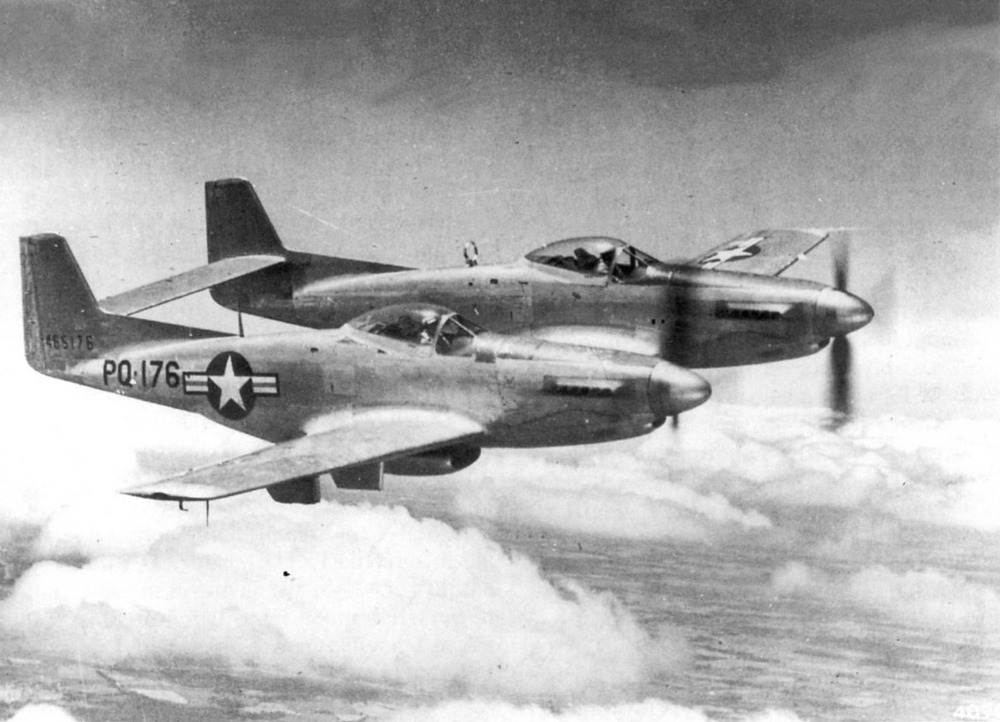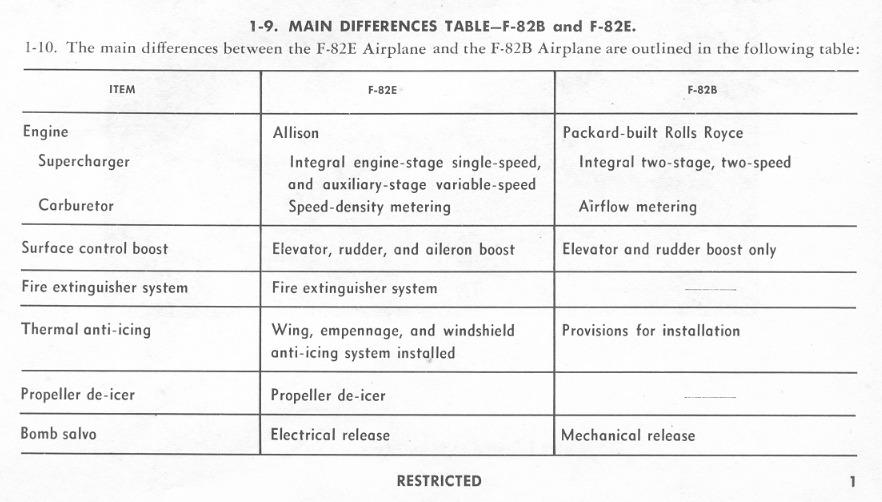History
By late 1944, the war in the Pacific was progressing favorably for the Allies, and it was only a matter of months before Japan itself would face large-scale B-29 Superfortress raids. These bombers, however, required long-range escort fighters, and the USAAF had none with the necessary endurance. The Lockheed P-38 Lightning and North American P-51D Mustang could manage around 2,000 miles, enough for Berlin missions from England, but they lacked the range for flights from the Solomons or the Philippines to Japan.
A new escort fighter with extreme range and performance equal to contemporary designs was urgently needed. In October 1943, North American Aviation engineers began work on what would become the P-82 Twin Mustang. Their concept joined two lightweight P-51-derived fuselages with a common wing center section to reduce drag, each housing an engine and cockpit. With dual controls, two pilots could relieve one another during long missions.
A mockup and wind-tunnel model were completed in early 1944, and after inspection on February 8, North American received a contract to build XP-82 prototypes with Packard-built Merlin V-1650-23/25 engines rated at 1,860 horsepower, as well as two XP-82As fitted with Allison V-1710s. Unlike the P-38 Lightning, the propellers turned inward toward the fuselages. The twin fuselages themselves were adapted from the lightweight XP-51F design. The left cockpit had full instrumentation, while the right had basic instruments but complete flight controls.
The first XP-82 prototype rolled out of Inglewood on May 25, 1945, and flew for the first time on June 16. The second was delivered in September. Flight tests demonstrated clear superiority over the P-51D: a top speed of 468 mph (comparable to the P-51H), a service ceiling of 41,000 ft, and an exceptional maximum range of 3,445 miles. The XP-82A Allison variant was nearly identical, though only one of the two ordered was completed and delivered in October 1945. These aircraft were later redesignated as F-82Es in 1948.
Even before the prototype flew, the Army Air Forces had ordered 500 P-82B production aircraft on March 8, 1944. The P-82B was externally similar to the XP-82, but incorporated pressure carburetors on its Merlins, provisions for underwing pylons, and six improved M3 .50 caliber Browning machine guns. The first P-82B flew on October 31, 1945.
The sudden end of the war, however, forced a reassessment. On December 7, 1945, the order was cut to 270 aircraft: 20 P-82Bs already in assembly and 230 P-82Es. Further reductions left only 20 P-82Bs completed (serial numbers 44-65160 to 65179), delivered between November 1945 and March 1946.
Most went to the 27th Fighter Escort Group at Kearney AAF, Nebraska, for training and evaluation. Two were pulled for conversion into the P-82C and P-82D night-fighter prototypes, while another, serial 44-65179, was used by NACA to mount and test the experimental AAM-A-1 Firebird missile.
The most famous P-82B was Betty Jo (44-65168). Stripped of armament and fitted with 310-gallon drop tanks and additional fuselage tanks, it flew nonstop from Hickam Field, Hawaii, to New York’s LaGuardia Field on February 27-28, 1947, with a distance of 4,968 miles in 14 hours and 32 minutes, averaging 347 mph. Today, Betty Jo is preserved at the National Museum of the U.S. Air Force.
By 1949, the Merlin-powered P-82Bs had been retired in favor of the Allison-engined P-82E, which would become the first Twin Mustang variant to see combat in the Korean War.






